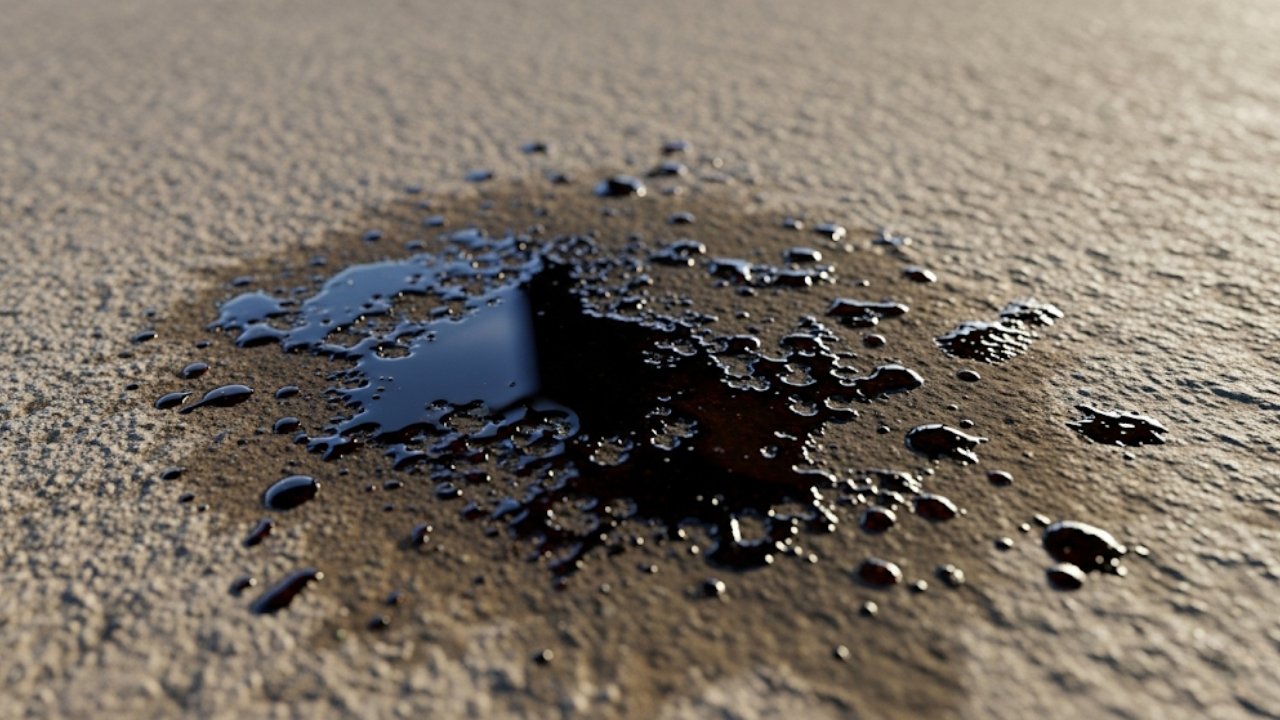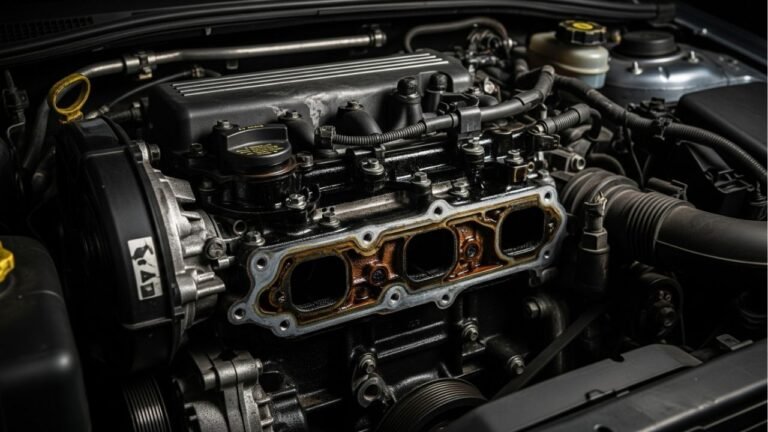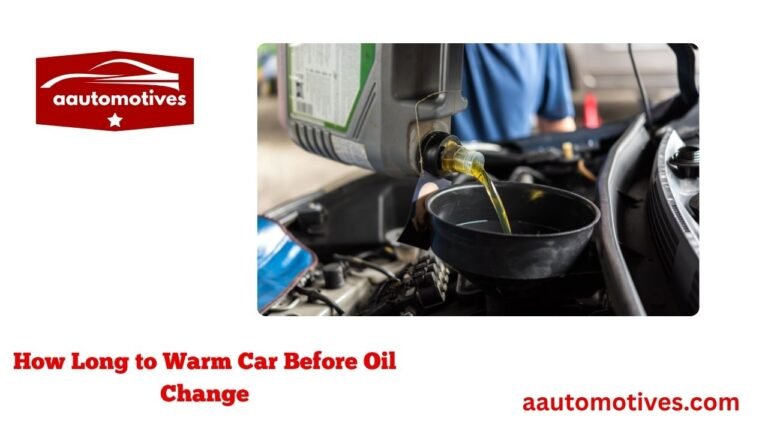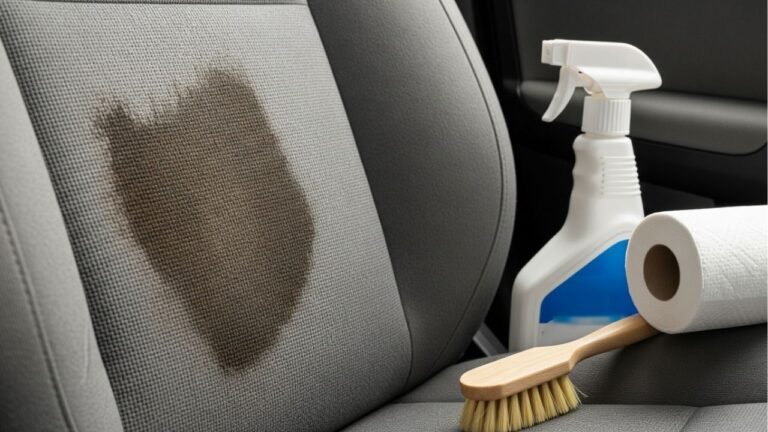How to Remove Car Oil Stains from Concrete: A Friendly, Foolproof Guide

You know that moment when you’re walking to your car, coffee in hand, birds chirping, and BAM — you see it. A dark, slick, ugly oil stain staring back at you from the driveway like a scar on your home’s reputation. That was me, two weeks ago. My neighbor even asked, “Hey, your car alright?” It wasn’t just about the car. It was about my pride.
Oil stains on concrete are stubborn little beasts. They seep in, spread out, and cling like they pay rent. If you’ve ever Googled “how to remove car oil stains from concrete”, you’re not alone. I’ve been there, scrubbing away with dish soap and hope. But here’s the good news: You can get rid of them — completely.
This guide is a mix of real-life experience, research, and good old-fashioned trial and error. I’ll walk you through everything you need to know — and yes, I’ll even tell you what not to do.
In This Article
- 1 Why Car Oil Stains Are So Tough to Beat
- 2 First Things First: Identify the Type of Stain
- 3 Quick Fix: Removing a Fresh Oil Stain (Act Fast!)
- 4 Old and Set-In Stains? Time to Bring Out the Big Guns
- 5 Pressure Washing: The Game-Changer
- 6 A Few Things I Wish I Knew Earlier
- 7 Quick Comparison Table of Cleaning Methods
- 8 Proactive Steps: How to Prevent Future Stains
- 9 When Nothing Works: Repainting or Resurfacing the Concrete
- 10 Homemade Poultice: A Secret Weapon for Stubborn Stains
- 11 How Long Does It Take to Fully Remove an Oil Stain?
- 12 Cultural Trick I Learned from My Uncle in the Village
- 13 Long-Term Solutions: Seal, Shield, and Simplify
- 13.1 Concrete Sealer Benefits:
- 13.2 Best Practices:
- 13.3 FAQs (Part 1 – More to come in Part 2)
- 13.4 Q4: Will pressure washing damage concrete?
- 13.5 Q5: How do I know if the oil has fully come out?
- 13.6 Q6: Are there any eco-friendly commercial products?
- 13.7 Q7: Can car oil damage concrete permanently?
- 13.8 Q8: Is it okay to use bleach on oil stains?
- 14 Final Thoughts: Oil Stains Don’t Have to Win
Why Car Oil Stains Are So Tough to Beat

The real problem is that oil binds to the dust and minerals in the concrete. Over time, it gets darker and harder to remove. Add heat, sun, and a few rainy days? Boom — permanent-looking stain.
But don’t lose hope. Whether your stain is fresh or years old, there’s a solution. You just need to use the right tools and techniques, and a bit of elbow grease (or a pressure washer).
Let’s break it down.
First Things First: Identify the Type of Stain
Not all oil stains are created equal. Before we dive into the fixes, let’s look at what you’re dealing with:
| Stain Type | Description | Best Removal Method |
|---|---|---|
| Fresh Oil Stain | Wet, shiny, may still be dripping | Kitty litter + detergent |
| Dried Oil Stain | Darkened spot, dry to touch | Degreaser or oven cleaner |
| Old Set-In Stain | Years old, soaked deep into concrete | Poultice or heavy-duty degreaser |
| Mixed Stains | Oil + coolant, or oil + rust | Combo of cleaners or acid wash |
If you can figure out how long the stain has been there, you can tailor your cleaning method for the best results.
Quick Fix: Removing a Fresh Oil Stain (Act Fast!)
If you just saw the oil drip today or within a few hours, congratulations — you have the best shot at total removal. Here’s what worked for me:
Step-by-Step:
-
Blot the Excess Oil
-
Use paper towels or an old cloth to soak up any liquid. Don’t rub!
-
-
Apply Kitty Litter
-
Spread clay-based kitty litter over the stain.
-
Step on it to crush it in — think of it like exfoliating concrete.
-
-
Let It Sit
-
Leave it for at least 1–2 hours (overnight is better).
-
-
Sweep It Off
-
Use a broom and sweep the litter away.
-
-
Scrub with Dish Soap
-
Mix dish soap with hot water, scrub with a stiff brush, and rinse.
-
It’s simple, but it works wonders on fresh oil. If you’ve caught the spill early, this might be all you need.
Old and Set-In Stains? Time to Bring Out the Big Guns
So, you missed the golden window. Don’t worry — it’s not the end of the road. If the stain’s been there for weeks (or years), it’s time to step up your game. I’ve tested a few methods, and these three gave me the best results:
1. Use a Concrete Degreaser
You can find these at any hardware store. They’re made to penetrate deep into porous surfaces.
-
Pour it generously over the stain.
-
Scrub it in with a stiff brush.
-
Let it sit for 15–30 minutes (check the label).
-
Rinse it off with hot water or a pressure washer.
Pros: Works well on older stains.
Cons: Can be expensive, and requires elbow grease.
2. Try Baking Soda + Dish Soap + Vinegar
Yes, it’s a little DIY chemistry, but surprisingly effective.
-
Sprinkle baking soda over the stain.
-
Pour dish soap on top.
-
Add white vinegar (watch it fizz!).
-
Let it sit 30 minutes.
-
Scrub and rinse with warm water.
This combo helps break down grease and oil bonds while being eco-friendly.
3. Oven Cleaner (No Joke!)
I was skeptical, but this hack came from a retired mechanic friend.
-
Spray a generous layer of foaming oven cleaner on the stain.
-
Let it sit for 10–15 minutes.
-
Scrub with a brush, then rinse.
Warning: Use gloves and don’t breathe it in. This is strong stuff.
Pressure Washing: The Game-Changer
If you’ve tried scrubbing and you still see that dark shadow of shame on your concrete, don’t panic — it’s time for the power play.
A pressure washer can blast away years of oil buildup, especially if you use it with a degreaser or detergent. The high-pressure water works like a miracle when you want to remove embedded oil from porous surfaces like concrete.
Here’s how I did it:
-
Apply a degreaser first and let it sit 15 minutes.
-
Use a rotary nozzle on your pressure washer for better reach.
-
Hold it at a 45° angle and spray slowly.
-
Rinse thoroughly and let dry.
Don’t have a pressure washer? You can rent one from most home improvement stores for a day.
A Few Things I Wish I Knew Earlier
Let me be honest — I made a lot of mistakes. Here’s what I learned the hard way:
-
Don’t use bleach. It discolors the concrete but doesn’t help with the oil.
-
Avoid wire brushes — they can scratch the surface and leave rust stains.
-
Test in a small area first, especially with harsh chemicals.
-
If nothing works, repainting or sealing the concrete might be your last option — but we’ll get to that later.
Quick Comparison Table of Cleaning Methods
| Method | Effectiveness | Cost | Eco-Friendly? | Best For |
|---|---|---|---|---|
| Kitty Litter + Soap | ⭐⭐⭐ | Low | ✅ | Fresh stains |
| Degreaser | ⭐⭐⭐⭐ | Medium | ❌ (mostly) | Old stains |
| Baking Soda + Vinegar | ⭐⭐⭐ | Low | ✅ | Mild to moderate stains |
| Oven Cleaner | ⭐⭐⭐⭐ | Medium | ❌ | Tough stains |
| Pressure Washing | ⭐⭐⭐⭐⭐ | High | ✅ | Set-in, old stains |
Proactive Steps: How to Prevent Future Stains
Now that we’ve scrubbed, sprayed, and sacrificed Saturday afternoons to this battle — let’s not do it again. Here are some easy ways to protect your driveway or garage:
-
Use an oil drip mat under your car.
-
Regularly check your car for leaks.
-
Apply a concrete sealer — it creates a barrier against stains.
-
Clean up oil as soon as you notice it.
Prevention is way easier than dealing with soaked-in oil spots, trust me.
When Nothing Works: Repainting or Resurfacing the Concrete
Sometimes, despite your best efforts, the stain refuses to leave. You’ve tried the kitty litter. You’ve scrubbed until your arms ached. You even pulled out the pressure washer. Yet, the ghost of that oil stain remains — haunting your driveway.
That’s when you consider repainting or resurfacing your concrete.
Here’s what that looks like:
Step-by-Step Resurfacing Guide:
-
Clean the Area
-
Remove any loose debris, dirt, or remaining oil residue.
-
-
Etch the Surface
-
Use a concrete etching solution to roughen the surface. This helps new paint or coating stick.
-
-
Apply a Primer
-
Use a concrete bonding primer before paint.
-
-
Paint or Seal
-
Choose a concrete stain-resistant paint or epoxy coating.
-
Roll or spray it evenly, let it dry completely.
-
This method doesn’t remove the stain but hides it permanently and gives your surface a fresh, polished look. Plus, sealed concrete is easier to clean next time.
Homemade Poultice: A Secret Weapon for Stubborn Stains
Here’s a DIY trick I picked up from a garage restoration forum — it’s called a poultice. Fancy name, simple science.
A poultice is a paste that you apply over the stain, and it draws the oil out of the concrete as it dries.
Ingredients:
-
Baking soda or powdered clay
-
Acetone or paint thinner
Instructions:
-
Mix until it forms a thick paste.
-
Apply over the stain, about ½ inch thick.
-
Cover with plastic wrap and tape down the edges.
-
Leave for 24–48 hours.
-
Scrape and rinse off.
It’s like a deep pore cleanser for your driveway. This method works great when all else fails, especially for old, deep-set stains.
How Long Does It Take to Fully Remove an Oil Stain?
Honestly? It depends. Some stains disappear in a day. Others take multiple rounds of cleaning and drying.
Factors that affect removal time:
-
Age of the stain
-
Type of concrete surface (smooth vs. rough)
-
Weather conditions
-
Cleaning method used
Typically, you’ll start to see noticeable results after the first clean, but full removal may take a week or more, especially for older spots.
Cultural Trick I Learned from My Uncle in the Village
Growing up in a small village, my uncle taught me a trick he swore by. He didn’t have degreasers or pressure washers. But he used a mixture of hot ash and saltwater to clean oil spills from his workshop floor.
It worked, surprisingly.
Here’s how:
-
Collect wood ash from burned firewood.
-
Mix with a little salt and hot water to form a gritty paste.
-
Scrub it into the concrete with a brush.
-
Let it dry, then rinse away.
It’s old-school and natural — and while not as effective as commercial solutions, it’s a zero-cost method that genuinely works for fresh stains.
Long-Term Solutions: Seal, Shield, and Simplify
Once your concrete is clean, it’s time to future-proof it. This part is like giving your driveway armor.
Concrete Sealer Benefits:
-
Prevents future oil from soaking in.
-
Makes cleaning faster and easier.
-
Adds a nice glossy or matte finish.
Best Practices:
-
Apply in dry weather.
-
Clean the surface first.
-
Reapply every 2–3 years depending on wear.
Sealing your concrete is like putting a raincoat on your driveway. Oil still falls, but it slides right off.
FAQs (Part 1 – More to come in Part 2)
Q1: Can I use WD-40 to remove oil stains from concrete?
A: Yes, WD-40 can help break down oil. Spray, wait 10 minutes, scrub, and rinse. But it’s not the most eco-friendly option.
Q2: Will Coca-Cola work on oil stains?
A: Surprisingly, yes — for light stains. Its acidity can help lift minor grease, but don’t expect magic on older stains.
Q3: Can you paint over oil stains?
A: Not directly. You’ll need to remove as much oil as possible or use a special concrete primer first.
Q4: Will pressure washing damage concrete?
A: Not if done correctly. Use a medium pressure setting and a rotary nozzle to avoid pitting the concrete.
Q5: How do I know if the oil has fully come out?
A: If the area is no longer dark after drying and doesn’t feel greasy to the touch, the stain is likely gone.
Q6: Are there any eco-friendly commercial products?
A: Yes! Look for biodegradable degreasers like “Oil Eater” or “Simple Green Concrete Cleaner.” They’re safe for lawns and groundwater.
Q7: Can car oil damage concrete permanently?
A: Not usually — but unsealed concrete can absorb oil deep into its pores, making full removal very difficult over time.
Q8: Is it okay to use bleach on oil stains?
A: Avoid it. Bleach may lighten the concrete unevenly and won’t break down the oil properly. Use degreasers or vinegar-based solutions instead.
Final Thoughts: Oil Stains Don’t Have to Win
Removing oil from concrete can feel like cleaning up after a disaster — frustrating, slow, and thankless. But it’s possible, even satisfying once done.
If I’ve learned anything, it’s that consistency wins. You don’t have to be perfect, just persistent. The methods I’ve shared are things I’ve personally tried — some failed, some worked beautifully.
Don’t let a greasy patch ruin your day or your driveway. Whether you’re a DIY warrior or just someone tired of neighbors pointing at stains, now you know exactly how to remove car oil stains from concrete — the right way.
So grab your gloves, queue up your favorite playlist, and scrub like you mean it. Your driveway deserves it — and so do you.






